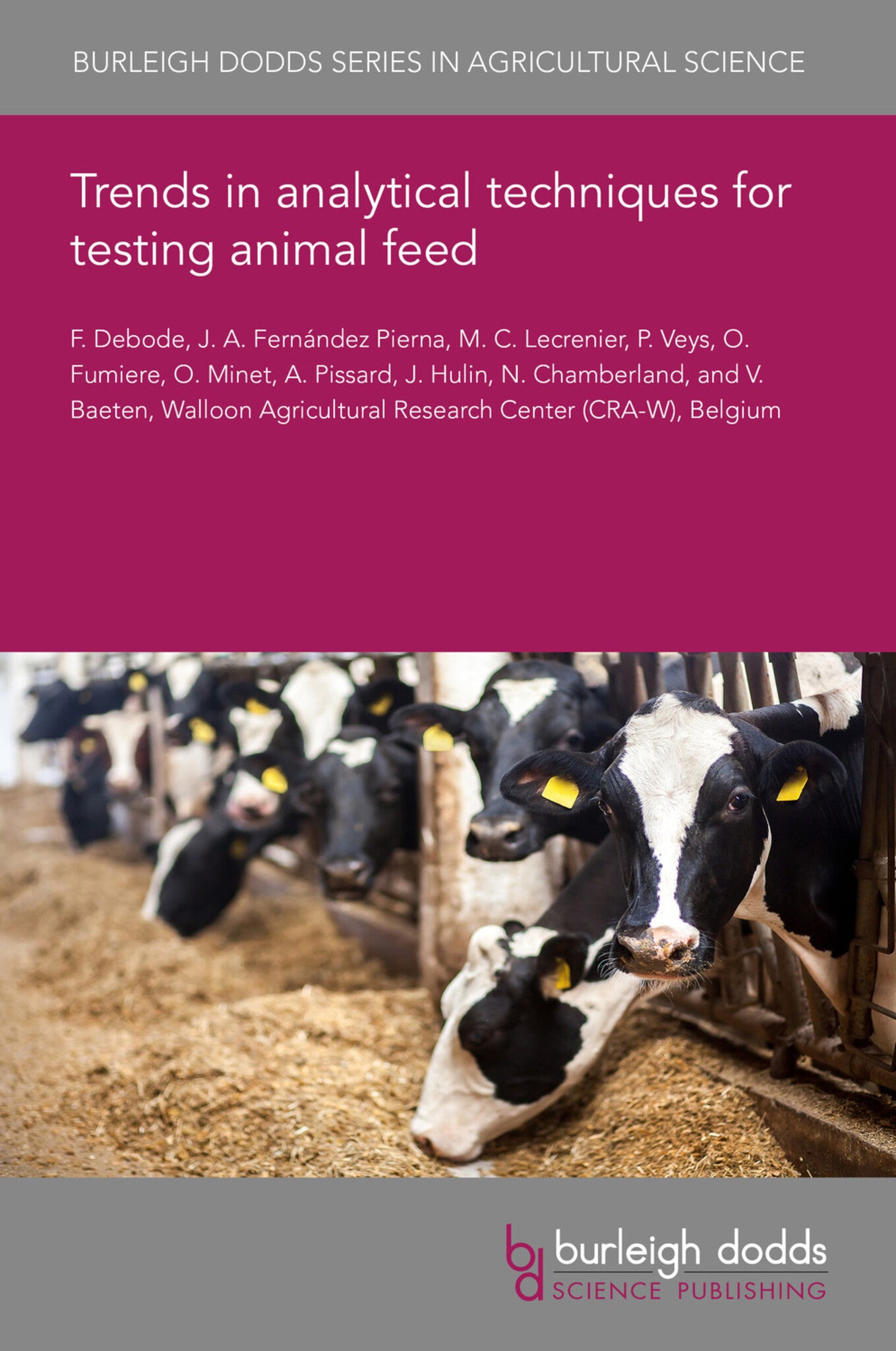We're sorry. An error has occurred
Please cancel or retry.
Trends in analytical techniques for testing animal feed
Dr frédéric debode,
Dr j. a. fernández pierna,
Dr marie-caroline lecrenier,
Dr p. veys,
Dr o. fumiere,
View More
Dr o. minet,
Dr a. pissard,
Dr j. hulin,
Dr n. chamberland,
Dr v. baeten
Regular price
£25.00
Sale price
£25.00
Regular price
£25.00
Unit price
/
per
Sale
Sold out
Re-stocking soon
The challenges for the feed analysis sector will be to ensure feed quality and safety. Innovative strategies need to be implemented to authenticate feed and feed ingredients and to check that they ...
Read More

Some error occured while loading the Quick View. Please close the Quick View and try reloading the page.
Couldn't load pickup availability
- Format:
-
07 June 2021

The challenges for the feed analysis sector will be to ensure feed quality and safety. Innovative strategies need to be implemented to authenticate feed and feed ingredients and to check that they fulfill all labelling obligations. This chapter focusses on the authentication of feed by different but complementary analytical techniques as microscopy, vibrational spectroscopy, genomics and proteomics. For each technique, trends are presented and, in addition, some combinations of technologies are shown in order to find solutions for complex situations. Moreover, with the explosion of data provided by the different technologies, Data Science is gaining importance as well as the interest for fast, mobile and greener technologies.

Price: £25.00
Publisher: Burleigh Dodds Science Publishing
Imprint: Burleigh Dodds Science Publishing
Series: Burleigh Dodds Series in Agricultural Science
Publication Date:
07 June 2021
ISBN: 9781801461818
Format: eBook
BISACs:
TECHNOLOGY & ENGINEERING / Agriculture / Animal Husbandry, Animal husbandry, TECHNOLOGY & ENGINEERING / Agriculture / Sustainable Agriculture, Sustainable agriculture, Agricultural science

1 Introduction 2 Microscopy 3 Vibrational spectroscopic techniques 4 Genomic methods 5 Proteomics 6 Multidisciplinary approach 7 Conclusion and future trends 8 Where to look for further information 9 References



